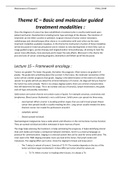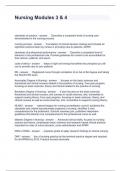Samenvatting
Summary for final exam of Mechanisms of Disease 2
- Instelling
- Universiteit Leiden (UL)
complete summary of all the lectures for the final exam of mechanisms of disease 2. With additional information in the summary of information given during the workgroups, self study assignments and the books of the reading list.
[Meer zien]












